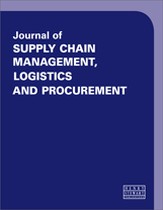A predictive model to determine the causes of safety stock requirements: An analytical approach to reduce working capital
Abstract
Safety stock is an important component of a company’s total inventory. Safety stocks, cycle stocks and seasonal builds drive the overall inventory position of the business, which has a direct impact on its cash flow and financial statements. For any company, it is important to service customers at the right level without getting stock-outs and, at the same time, carry optimal levels of inventory. It is often hard to find the right balance between inventory cost, customer service level and operational efficiency, as these three integral components of the supply chain go hand-in-hand and are prioritised over each other based upon the needs of the business. To achieve the optimum balance of service and cost, there is a need for a predictive working model which determines the causes of safety stock requirements for the current state of any business. This paper discusses a predictive model which can be used for any time horizon and enables an organisation to focus on the right variables to reduce safety stock requirements, thereby reducing inventory levels while meeting customer service level targets.
The full article is available to subscribers to the journal.
Author's Biography
Fazlur Rahman is Manager of Logistics Analytics/Capabilities at Kraft Heinz Food Company at its world headquarters in Chicago, USA. Kraft Heinz is the fifth-largest food and beverages company in the world. Fazlur leads continuous improvement projects for US operations and is also responsible for inventory policy and safety stock targets for all Kraft Heinz products in the US. He also leads the Demand Center of Excellence (COE) team, which provides support to the Sales and Operations Planning (S&OP) organisation in statistical forecasting and analytics-driven demand planning. Fazlur also has experience of SAP integration and network footprint changes implementation from the merger of Kraft and H. J. Heinz in 2015. Fazlur has an MBA degree from Duquesne University and is currently pursuing a PhD in data sciences from Harrisburg University. Fazlur has given professional seminars at APICS and IBF conferences.
Citation
Rahman, Fazlur (2018, September 1). A predictive model to determine the causes of safety stock requirements: An analytical approach to reduce working capital. In the Journal of Supply Chain Management, Logistics and Procurement, Volume 1, Issue 2. https://doi.org/10.69554/VVWK5942.Publications LLP
